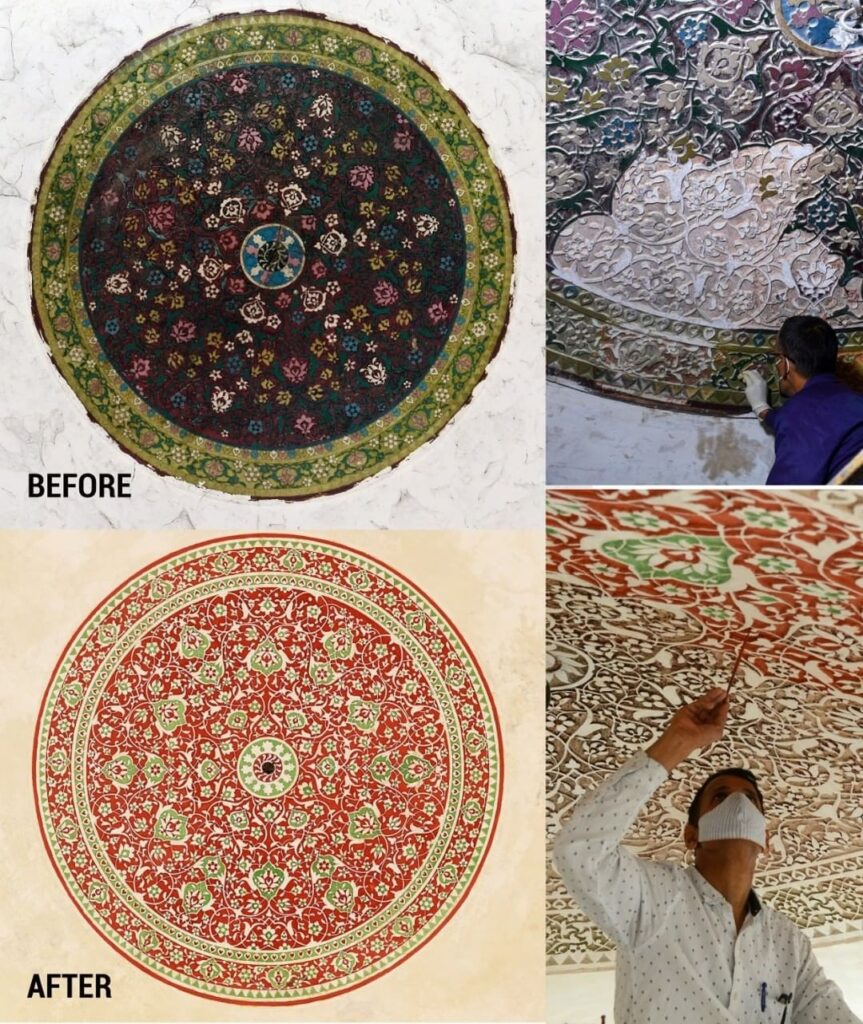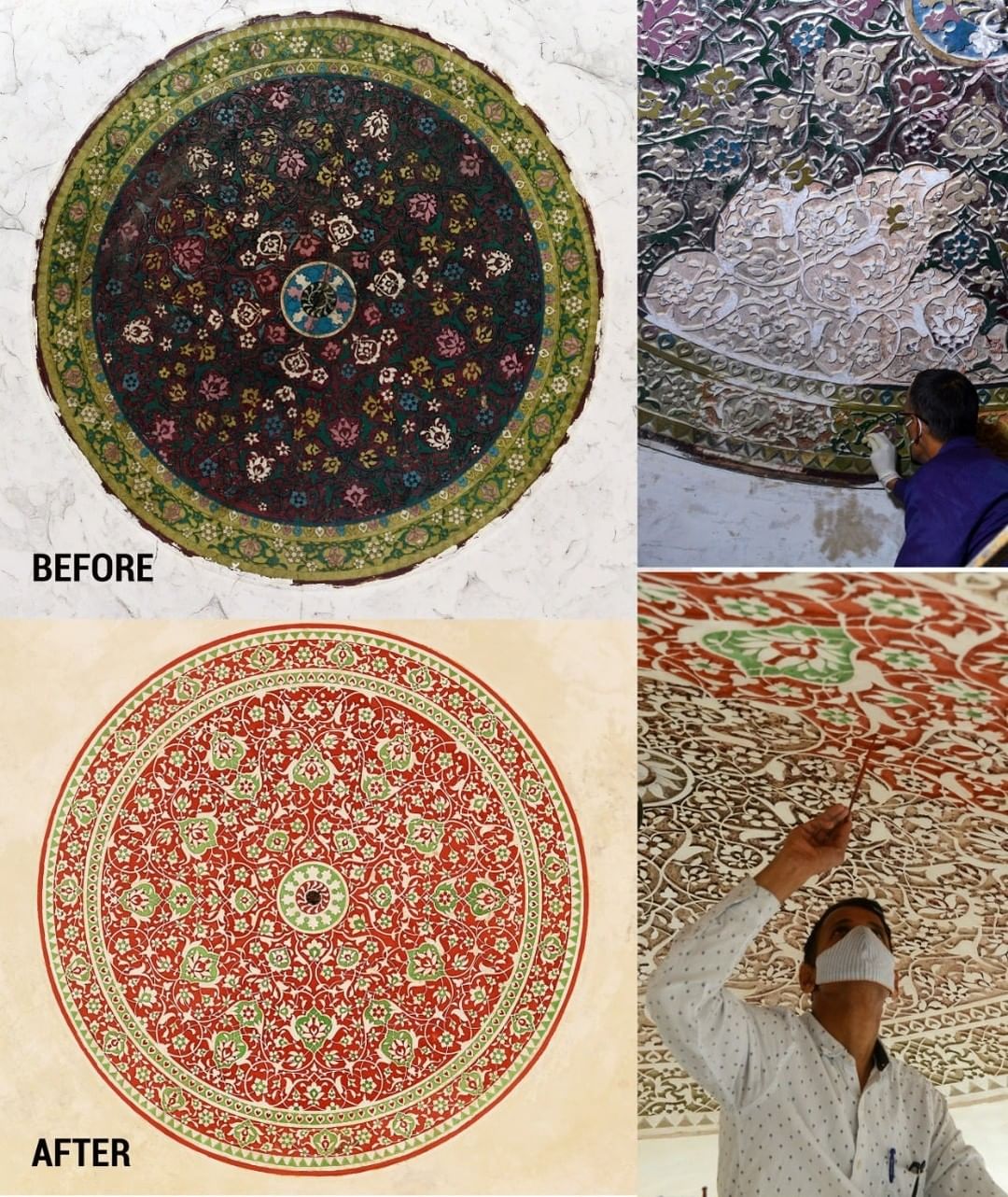Located in the Nizamuddin Auliya Shrine Complex of Delhi, this mosque is popularly known as the Khilji Mosque. It was built by Khizr Khan. the son of Alauddin Khilji, in 1315-1325 AD. In his book, Athar’al-Sanadid, Sir Syed Ahmed Khan talks about how a noble had suggested Khilji visit and spend time with Hazrat Nizamuddin Auliya but Khilji instead of going himself sent his son. He says in the book, “Khizr gained the company of the pious saint and became his devotee. During this period, he had the middle dome and the hall built”

Jamaat Khana Mosque, 1933
Consisting of a central domed chamber and two side chambers, it is the largest structure in the Dargah complex and caters to around 2 million people every year. Conservation work for the place, undertaken by Aga Khan Trust for Culture (AKTC), began in 2014, starting with the central chamber. The structure had suffered through deterioration due to time and mismanagement. Originally built in beautiful red sandstone, by the time the conservation project began, the inside of the mosque had been painted over with lead paint which not only reversed its original look but also destroyed the original sandstone. The key task was the paint removal not only from the walls but also geometrical motifs and Quranic inscriptions. Many of the pilasters and red sandstone blocks which were destroyed beyond repair had to be replaced. Even the domed ceiling had gone through several layers of plaster, cement, and paint and its restoration required 1500 man-days of work. The roof had leakage problems as well since the earlier protection workers, instead of properly fixing it, had slapped plaster over the leaks and corroded regions.
After 5 years of meticulous work, this structure has been restored to its original glory. Such conservation projects are a light in the dark that will ensure that our heritage and culture are preserved for the generations to come.







